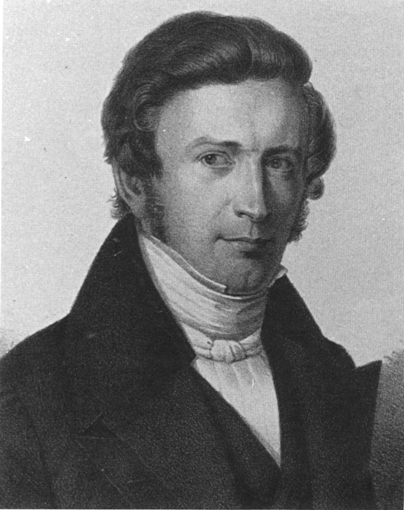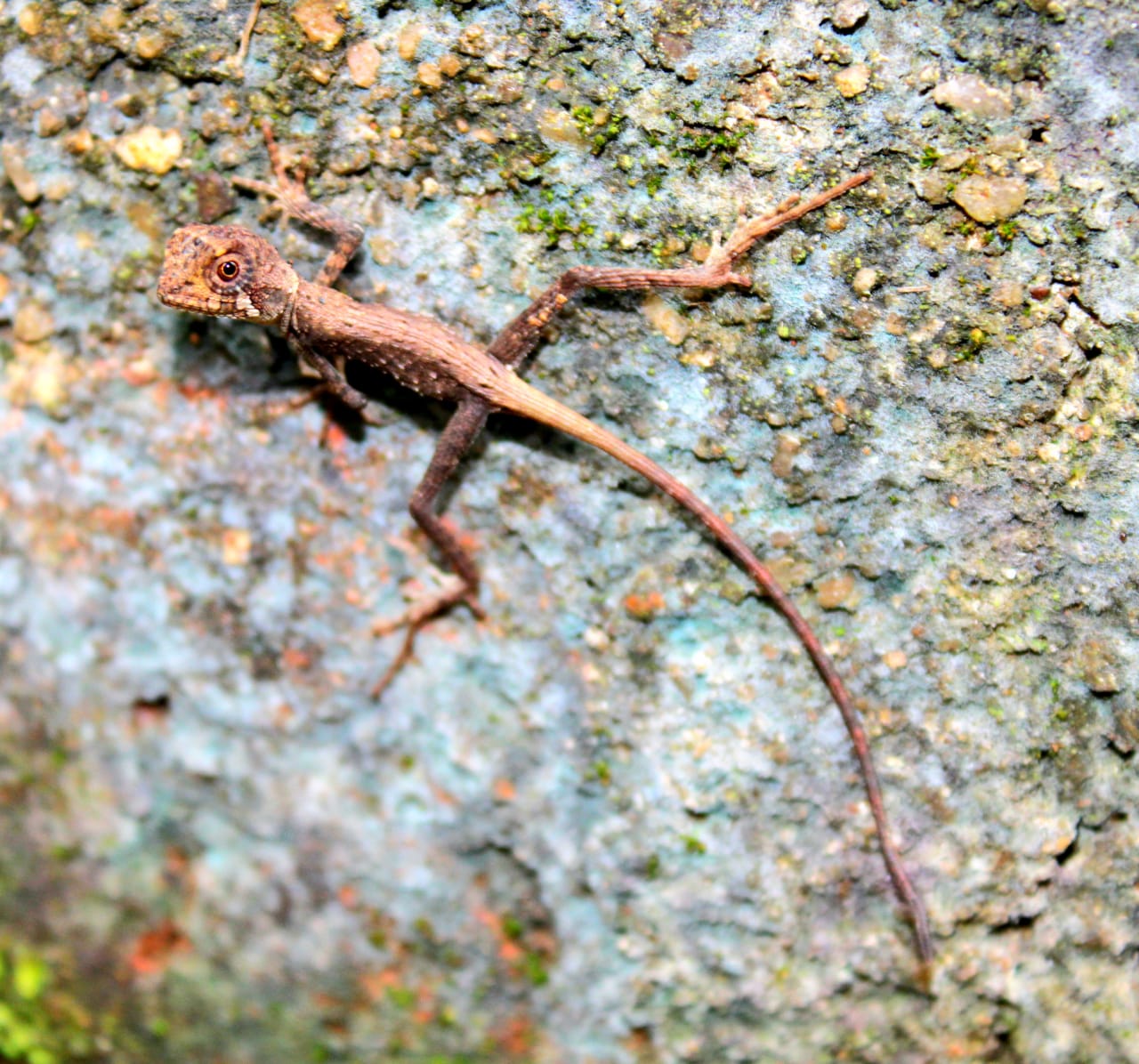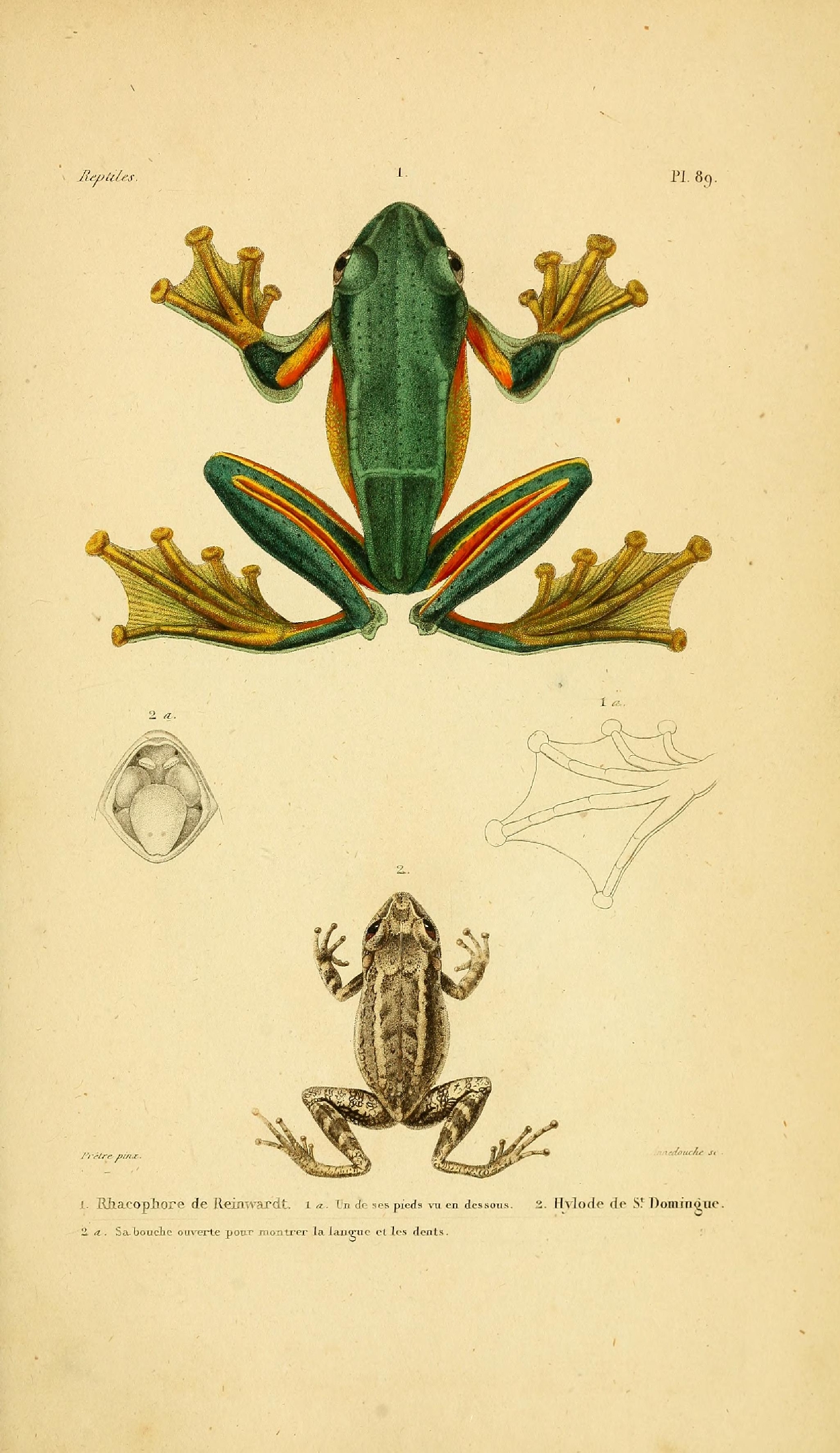|
Arend Friedrich August Wiegmann
Arend Friedrich August Wiegmann (2 June 1802 – 15 January 1841) was a German zoologist and herpetologist born in Braunschweig. He studied medicine and philology at the University of Leipzig, and afterwards was an assistant to Martin Lichtenstein (1780–1857) in Berlin. In 1828 he became a professor at Cologne, and two years later was an extraordinary professor at the Humboldt University in Berlin. Wiegmann specialized in the study of herpetology and mammalogy. In 1835, he founded, together with other scholars, the zoological periodical '' Archiv für Naturgeschichte'', also known as "Wiegmann's Archive". With Johann Friedrich Ruthe (1788–1859) he wrote an important textbook of zoology called ''Handbuch der Zoologie'', and in 1834 Wiegmann published ''Herpetologia Mexicana'', a monograph on the reptiles of Mexico. In 1841 he died of tuberculosis at the age of 38 in Berlin. His father Arend Friedrich Wiegmann (1771–1853) a German researcher in botany. Species describ ... [...More Info...] [...Related Items...] OR: [Wikipedia] [Google] [Baidu] |
Wiegmann Arend Friedrich August 1802-1841
Wiegmann or Wiegman is the surname of: * Arend Friedrich August Wiegmann (1802–1841), German zoologist * Arend Joachim Friedrich Wiegmann (1770–1853), German pharmacist and botanist * Bert Wiegman (born 1952), British private equity manager * Bettina Wiegmann (born 1971), German athlete * Casey Wiegmann (born 1973), American football player * Diet Wiegman (born 1944), Dutch visual artist * Esmé Wiegman (born 1975), Dutch politician * Fred Wiegman (1924–1968), Dutch actor and singer * Paul Wiegmann Paul B. Wiegmann (Павел Борисович Вигман) is a Russian physicist. He is the Robert W. Reneker Distinguished Service Professor in the Department of Physics at the University of Chicago, James Franck Institute and Enrico Fermi I ... (born 1952), Russian-American physicist and university professor * Piet Wiegman (1885–1963), Dutch painter, graphic artist, sculptor, ceramist and puppeteer * Sarina Wiegman (born 1969), Dutch footballer and football coach ... [...More Info...] [...Related Items...] OR: [Wikipedia] [Google] [Baidu] |
Botany
Botany, also called plant science (or plant sciences), plant biology or phytology, is the science of plant life and a branch of biology. A botanist, plant scientist or phytologist is a scientist who specialises in this field. The term "botany" comes from the Ancient Greek word (') meaning " pasture", "herbs" " grass", or "fodder"; is in turn derived from (), "to feed" or "to graze". Traditionally, botany has also included the study of fungi and algae by mycologists and phycologists respectively, with the study of these three groups of organisms remaining within the sphere of interest of the International Botanical Congress. Nowadays, botanists (in the strict sense) study approximately 410,000 species of land plants of which some 391,000 species are vascular plants (including approximately 369,000 species of flowering plants), and approximately 20,000 are bryophytes. Botany originated in prehistory as herbalism with the efforts of early humans to identify – a ... [...More Info...] [...Related Items...] OR: [Wikipedia] [Google] [Baidu] |
Johann Georg Wagler
Johann Georg Wagler (28 March 1800 – 23 August 1832) was a German herpetologist and ornithologist. Wagler was assistant to Johann Baptist von Spix, and gave lectures in zoology at the Ludwig Maximilian University of Munich after it was moved to Munich. He worked on the extensive collections brought back from Brazil by Spix, and published partly together with him books on reptiles from Brazil. Wagler wrote ''Monographia Psittacorum'' (1832), which included the correct naming of the blue macaws. In 1832, Wagler died of an accidental self-inflicted gunshot wound while out collecting in München-Moosach. Life Johann Georg Wagler was a German naturalist and scientist in the 19th century, whose works primarily focused on herpetology and ornithology (Beolens, Watkins & Grayson, 2011). Johan Georg Wagler was born on the 28th of March 1800, in the city of Nuremberg, where the Chancellor of the City Court was Wagler's father (Wagler, 1884). After taking up gymnastics at Nuremberg, Jo ... [...More Info...] [...Related Items...] OR: [Wikipedia] [Google] [Baidu] |
Otocryptis Wiegmanni
''Otocryptis wiegmanni'', commonly called the brown-patched kangaroo lizard, Sri Lankan kangaroo lizard or Wiegmann's agama, is a small, ground-dwelling agamid lizard endemic to Sri Lanka. Etymology The specific name, ''wiegmanni'', is in honour of German herpetologist Arend Friedrich August Wiegmann.Beolens, Bo; Watkins, Michael; Grayson, Michael (2011). ''The Eponym Dictionary of Reptiles''. Baltimore: Johns Hopkins University Press. xiii + 296 pp. . (''Otocryptis wiegmanni'', p. 285). Habitat The preferred habitat of ''O. wiegmanni'' is the wet zone forests and lower mountain forests (rainfall >2000 mm), up to , of Sri Lanka. It is commonly seen in the leaf litter of shady rain forests. Defensive behaviour When perceiving danger, ''O. wiegmanni'' spurts away quickly on its large hind legs and might eventually climb up a sapling or tree. Diet ''O. wiegmanni'' feeds on small insects, grubs, and tender shoots. Deraniyagala PEP (1953). ''A Colored Atlas of some Vertebrat ... [...More Info...] [...Related Items...] OR: [Wikipedia] [Google] [Baidu] |
Gabriel Bibron
Gabriel Bibron (20 October 1805 – 27 March 1848) was a French zoologist and herpetologist. He was born in Paris. The son of an employee of the Museum national d'histoire naturelle, he had a good foundation in natural history and was hired to collect vertebrates in Italy and Sicily. Under the direction of Jean Baptiste Bory de Saint-Vincent (1778–1846), he took part in the Morea expedition to Peloponnese. He classified numerous reptile species with André Marie Constant Duméril (1774–1860), whom he had met in 1832. Duméril was interested mainly in the relations between genera, and he left to Bibron the task of describing the species. Working together they produced the ''Erpétologie Générale'', a comprehensive account of the reptiles, published in ten volumes from 1834 to 1854. Also, Bibron assisted Duméril with teaching duties at the museum and was an instructor at a primary school in Paris. Bibron contracted tuberculosis and retired in 1845 to ... [...More Info...] [...Related Items...] OR: [Wikipedia] [Google] [Baidu] |
André Marie Constant Duméril
André Marie Constant Duméril (1 January 1774 – 14 August 1860) was a French zoologist. He was professor of anatomy at the Muséum national d'histoire naturelle from 1801 to 1812, when he became professor of herpetology and ichthyology. His son Auguste Duméril was also a zoologist. Life André Marie Constant Duméril was born on 1 January 1774 in Amiens and died on 14 August 1860 in Paris. He became a doctor at a young age, obtaining, at 19 years, the ''prévot'' of anatomy at the medical school of Rouen. In 1800, he left for Paris and collaborated in the drafting of the comparative anatomy lessons of Georges Cuvier. He replaced Cuvier at the Central School of the Panthéon and had, as his colleague, Alexandre Brongniart. In 1801, he gave courses to the medical school of Paris. Under the ''Restauration'', he was elected a member of the Académie des Sciences (French Academy of Sciences) and after 1803 succeeded Lacépède, who was occupied by his political o ... [...More Info...] [...Related Items...] OR: [Wikipedia] [Google] [Baidu] |
Liolaemus
''Liolaemus'' is a genus of iguanian lizards, containing many species, all of which are endemic to South America. Description Members of the genus ''Liolaemus'' form a dominant part of the lizard fauna of the southern part of the continent of South America, and vary considerably in size ( snout–vent length) and weight (). Geographic range ''Liolaemus'' species are found in the Andes and adjacent lowlands, from Peru to Tierra del Fuego, at altitudes that can exceed . '' Liolaemus magellanicus'' and '' Liolaemus sarmientoi'' are the world's southernmost reptiles, living as far south as Isla Granda de Tierra del Fuego and the northern shores of the Strait of Magellan respectively. Diet Most species of ''Liolaemus'' are omnivorous, but a few purely insectivorous and herbivorous species are known. Species There are more than 225 described species in the genus ''Liolaemus'', but the true number of species may be about double this number. ''Liolaemus'' is by far the la ... [...More Info...] [...Related Items...] OR: [Wikipedia] [Google] [Baidu] |
Amphibian
Amphibians are four-limbed and ectothermic vertebrates of the class Amphibia. All living amphibians belong to the group Lissamphibia. They inhabit a wide variety of habitats, with most species living within terrestrial, fossorial, arboreal or freshwater aquatic ecosystems. Thus amphibians typically start out as larvae living in water, but some species have developed behavioural adaptations to bypass this. The young generally undergo metamorphosis from larva with gills to an adult air-breathing form with lungs. Amphibians use their skin as a secondary respiratory surface and some small terrestrial salamanders and frogs lack lungs and rely entirely on their skin. They are superficially similar to reptiles like lizards but, along with mammals and birds, reptiles are amniotes and do not require water bodies in which to breed. With their complex reproductive needs and permeable skins, amphibians are often ecological indicators; in recent decades there has been a dramat ... [...More Info...] [...Related Items...] OR: [Wikipedia] [Google] [Baidu] |
Species Description
A species description is a formal description of a newly discovered species, usually in the form of a scientific paper. Its purpose is to give a clear description of a new species of organism and explain how it differs from species that have been described previously or are related. In order for species to be validly described, they need to follow guidelines established over time. Zoological naming requires adherence to the ICZN code, plants, the ICN, viruses ICTV, and so on. The species description often contains photographs or other illustrations of type material along with a note on where they are deposited. The publication in which the species is described gives the new species a formal scientific name. Some 1.9 million species have been identified and described, out of some 8.7 million that may actually exist. Millions more have become extinct throughout the existence of life on Earth. Naming process A name of a new species becomes valid (available in zo ... [...More Info...] [...Related Items...] OR: [Wikipedia] [Google] [Baidu] |
Scincus Hemprichii
''Scincus hemprichii'' is a species of lizard which is endemic to Yemen Yemen (; ar, ٱلْيَمَن, al-Yaman), officially the Republic of Yemen,, ) is a country in Western Asia. It is situated on the southern end of the Arabian Peninsula, and borders Saudi Arabia to the north and Oman to the northeast an .... References {{Taxonbar, from=Q5067628 hemprichii Reptiles described in 1837 Taxa named by Arend Friedrich August Wiegmann ... [...More Info...] [...Related Items...] OR: [Wikipedia] [Google] [Baidu] |
Laemanctus Longipes
The eastern casquehead iguana (''Laemanctus longipes'') is a species of lizard in the family Corytophanidae. The species is native to Mexico and Central America. Geographic range ''L. longipes'' is found in the southern Mexican states of Colima, Oaxaca, Veracruz, and Yucatán, and in the Central American countries of Belize, Guatemala, Honduras, and Nicaragua. Description Long and thin, ''L. longipes'' can reach 70 cm (27.5 in) in total length, two-thirds of which is a thin tail. The scales on the forehead are much larger than those on the back of the head. No projecting triangular scales occur on the posterior border of the head. The gular scales are bicarinate or tricarinate. Sexual dimorphism is present, but is difficult to observe. Males have a somewhat thicker tail root than females, and the hemipenes are sometimes visible when lifting the tail gently. Habitat The eastern casquehead iguana inhabits tropical wet, moist, and seasonally dry forests. It can pe ... [...More Info...] [...Related Items...] OR: [Wikipedia] [Google] [Baidu] |
Pelodiscus Sinensis
The Chinese softshell turtle (''Pelodiscus sinensis'') is a species of softshell turtle that is native to China (Inner Mongolia to Guangxi, including Hong Kong) and Taiwan, with records of escapees—some of which have established introduced populations—in a wide range of other Asian countries, as well as Spain, Brazil and Hawaii. Populations native to Northeast China, Russia, Korea and Japan were formerly included in this species, but are now regarded as separate as the northern Chinese softshell turtle (''P. maackii''). Furthermore, localized populations in Guangxi and Hunan (where the Chinese softshell turtle also is present), as well as Vietnam, are recognized as the lesser Chinese softshell turtle (''P. parviformis'') and Hunan softshell turtle (''P. axenaria''). The Chinese softshell turtle is a vulnerable species, threatened by disease, habitat loss, and collection for food such as turtle soup. Additionally, millions are now farmed, especially in China, to support ... [...More Info...] [...Related Items...] OR: [Wikipedia] [Google] [Baidu] |




.png)


